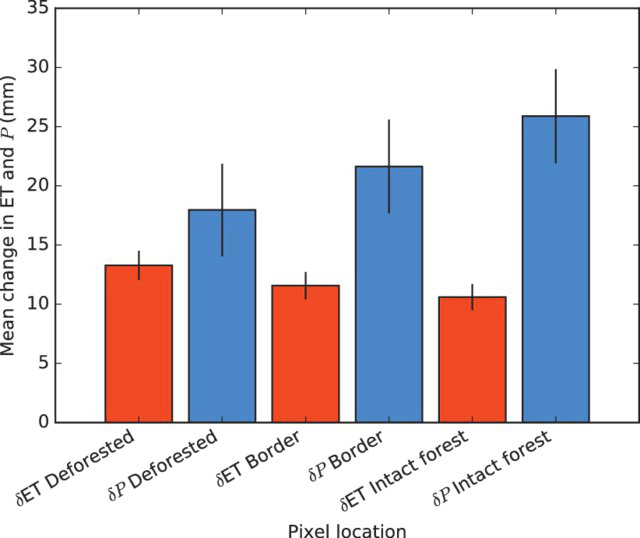The impact of deforestation on the hydrological cycle in Amazonia as observed from remote sensing
 Mean change in evapotranspiration (ET) from MOD16 and precipitation (P) from TRMM over deforested, border, and intact forest areas.
Mean change in evapotranspiration (ET) from MOD16 and precipitation (P) from TRMM over deforested, border, and intact forest areas.Abstract
Given widespread Amazonian deforestation, numerous studies have focused on how the regional hydrological cycle - in terms of precipitation (P) recycling from evapotranspiration (ET) - is impacted by deforestation. Nevertheless, climate macroscale and mesoscale models have given contradictory results on changes in ET and P with deforestation. To date, these results have not been evaluated with observations, so in this work, we assessed a decade of patterns in ET and P over deforested and forest areas using remote sensing (MODIS and TRMM, 2000–2012). We found a relative increase in ET and P in deforested areas, though there was a positive ET and P correlation over southern/deforested, and negative in northern/forested Amazonia. Although the absolute ET and P values are lower in deforested areas in comparison to border areas, we observed a positive change in ET and P in the last 10 years at the deforested areas. The increase in ET was larger within the deforested areas; meanwhile, P increased more from inside forest areas to the borders, which agrees with the ET and P correlation patterns. Our results help to inform the debate between the macroscale and mesoscale models, as deforestation impacts small-scale circulation patterns, turbulence, and moisture fluxes and convergence, and expand our understanding of the processes involved.